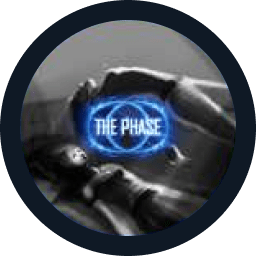Lucid Dreaming Mask — Practice Effectively
Lucid Dreaming App — Dream Journal, Dream Tracker & Lucid Dreaming Community

Dreams are an area that captivates many people. Even if only unintentionally, every second person has asked themselves, “What do my dreams mean?” Scientists are no exception to this. Lucid dreaming — a state during which a person realizes they are dreaming and can control what happens in the dream — is an especially astonishing phenomenon that has garnered much interest from researchers and those seeking to explore the capabilities of their consciousness.
A large share of credit for the significant contributions that have been made to the study of lucid dreaming should be given to Dr. Stephen LaBerge, whose work has greatly influenced the development of the science of sleep and the subconscious. Below, we will examine LaBerge’s contributions and explain his vision of lucid dreaming. We will also discuss methods by which anyone can learn to become aware of their dreams.
Biography of Dr. Stephen LaBerge
Many people are familiar with Dr. Stephen LaBerge‘s book “Lucid Dreaming.” The eminent scientist was born in 1947 in the USA. Though he is a psychologist by education, he has always been a researcher. Modern history considers him one of the pioneers of serious scientific research on lucid dreaming. His interest in this topic awakened in the late 1970s owing to his work, during which he began to study the phenomenon of dreams. His initial approach was an attempt to explain dreams from a scientific point of view, as he describes in his book.
In 1975, while studying at Stanford University, a young Stephen LaBerge began conducting his first experiments on lucid dreaming as part of his doctoral dissertation. It’s clear that this topic was very important to him, and there are many unexplored factors that excite the minds of many people. LaBerge became one of the first scientists to empirically confirm the existence of lucid dreams, and he managed to develop methods for recognizing and inducing them. LaBerge’s vision is reflected in many modern practices, as his research significantly advanced studies in the field of the neurophysiology of dreams.
Among Dr. Stephen LaBerge’s main achievements is the creation of the “Signal Movements” method, which enabled him to inform those around him that he was in a state of lucid dreaming. This discovery was a breakthrough as the doubts about the very idea of lucid dreams were shattered to pieces. This prompted a new perspective on this field, and interest in the study of lucid dreaming increased.
The Experiment of Stephen LaBerge and Lynne Nagel
Among LaBerge’s most famous work is his series of full-fledged experiments conducted with Lynne Nagel during which participants were asked to perform certain motor actions in response to signals received during dreams. LaBerge and Nagel used special devices to record the eye movements of people who were in the REM sleep phase. These movements served as signals that proved the person was aware that they were in a dream. Participants were pre-informed about the specific eye movements they needed to perform in the dream.
The results of the experiment led to a profound discovery and provided scientific confirmation that lucid dreams exist. Moreover, they made it possible to prove that a person can control their actions. This was a breakthrough — before, ideas about lucid dreams were almost ridiculed, but this scientific confirmation of the phenomenon changed people’s perspectives, as it was now indisputable that it is possible to become aware of oneself in a dream. Moreover, this process is even controllable.
Techniques for Entering Lucid Dreams
Lucid dreams can be induced, as they are not a spontaneous phenomenon, as one might assume. Yes, there are many cases in history when a person entered such a state by chance. However, this is an exception to the rule — lucidity in sleep is controllable and can be induced using various techniques. LaBerge and other researchers have identified several such techniques:
- Reality tests. This is one of the most popular methods proposed by LaBerge. The essence lies in regularly checking reality throughout the day. For example, you can ask yourself, “Am I awake right now?” After that, try to perform actions that are impossible in real life. For example, try to pass through a wall or fly. Then, if you perform such a test while in a state of deep relaxation and are successful, you will know you are in a lucid dream.
- The method of waking and returning to sleep. The essence of this method is to wake up after sleeping for 4–6 hours and then go back to sleep with the intention of becoming aware while dreaming. This helps stimulate the transition to a phase where dreams are brighter and more lucid.
- The “dreaming on demand” method. This technique involves creating a clear intention before falling asleep. You need to focus on the thought that you want to enter a lucid state. Then, throughout the night, try not to lose this idea in your subconscious.
- Dream diary. Keeping a dream diary helps you remember your dreams and notice characteristic signs of the lucid state. By recording their dreams every morning, a person will gradually develop their lucid dreaming skills.
For a deeper understanding of how to enter a lucid dream, it’s worth familiarizing yourself with all of Dr. Stephen LaBerge’s works. He has a number of outstanding books that can be considered a full-fledged guide to lucid dreaming.
What Possibilities Do Lucid Dreams Offer?
Lucid dreams offer vast opportunities for self-knowledge and practice. The first is the opportunity for creative self-expression, as lucid dreams allow you to realize your boldest plans and ideas. You can create worlds, find inspiration, or even compose music and paint pictures while in a state of complete control.
The second is therapeutic possibilities. Lucid dreams can be used to work through anxieties and phobias. Since the effects of this state do not go beyond your subconscious, there is no risk to the physical body, which allows you to safely learn to control your emotions in stressful situations.
The third is the opportunity to gain self-awareness. In a lucid dream, you can explore your psyche, discover hidden thoughts and emotions, and work through internal conflicts. Lucid dreams also provide an excellent space for experimentation. In a lucid dream, you can experience abilities that are impossible in real life, such as flying.
Results of Stephen LaBerge’s Research
Stephen LaBerge conducted numerous studies that significantly expanded the understanding of lucid dreaming. Among his main discoveries are:
- Lucid dreams can be induced deliberately.
- Deep neurophysiological foundations are at the core of this state.
- Lucidity in dreams is not a fictional idea and is easily noticeable by characteristic brain activity. The state has similarities with the state of wakefulness, which explains why a person can control what is happening in the subconscious.
His works also show that lucid dreams are useful for studying perception, memory, and mental states. As a result, there has been a surge in interest in this topic from ordinary people and scientists alike. The psychologist’s work served as a catalyst for further research on the application of lucid dreams in therapy and psychology.
Conclusion
The works of Stephen LaBerge provide revolutionary discoveries, as his experiments confirmed the existence of lucid dreams. The insights gained from his work have been the basis of hundreds of other works. LaBerge’s influence cannot be overestimated, as his works made the topic of lucid dreaming understandable to many people from all walks of life. Moreover, he developed effective and simple techniques for their practical use. But, most importantly, LaBerge turned this phenomenon from an esoteric concept into a subject of serious scientific research.
FAQ
Recommended reading
Top 5 Best Books on Lucid Dreaming
Сarlos Сastaneda and Lucid Dreaming
Lucid Dreaming Book by Stephen LaBerge
Lucid Dreaming Journal and Diary








